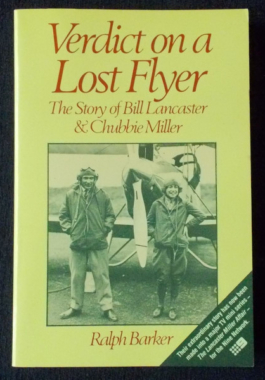William Lashly (1867 - 1940) was a man of great modesty, self-effacing and by all accounts one of the most remarkable lower-deck men of the Royal Navy. Lashly was recruited by Scott for the Engine Room and proved his worth over and over again. He knew his job backwards, was a teetotaller and non-smoker and was always selected for the most difficult journeys on the expedition. This is the diary Lashly kept while on Scott's last expedition in the Terra Nova and gives a new view of both the expeditions and life below-decks. Illustrated with black and white photographs. https://en.wikipedia.org/wiki/William_Lashly
-

-
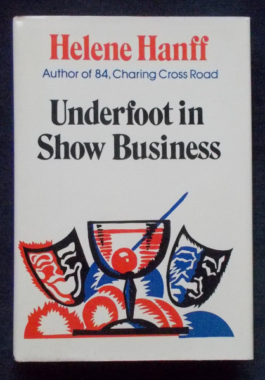
Helene Hanff shot to unexpected fame when her compendium of correspondence with a London book shop, 84 Charing Cross Road, touched the hearts of millions of readers. But long before her letters to Frank Doel made her famous, she was all set to become a playwright. She thought nothing of writing a three-act play in three weeks, and one of those plays won an important competition. As a result, she was taken up as an apprentice playwright by New York's prestigious Theatre Guild. She would be famous, and didn't care about living on coffee in a meagre bed-sit or borrowing her best friend's blouse for lunch with a producer. She was rapturously dizzy and young - and here is her funny account of the realities off which the dizzy rapture bounced.
-
 Traudl Junge was 22 years old and dreamt of a career as a ballerina, until the 'opportunity of her life' beckoned and she was appointed as Adolf Hitler's secretary. From 1942 until his death she was at his side in the bunker, typing his correspondence, his speeches and even his last private and political will and testament. It was only after the war that the horrible reality of Hitler's regime began to dawn on her, and she became racked with guilt for 'liking the greatest criminal ever to have lived.' Her journal, written in 1947, is a startling eyewitness account of Hitler's court during its final years, and of the building sense of doom as the war progressed. Illustrated with black and white photographs. https://cosmiccauldronbooks.com.au/p/dvd-blind-spot-hitlers-secretary/
Traudl Junge was 22 years old and dreamt of a career as a ballerina, until the 'opportunity of her life' beckoned and she was appointed as Adolf Hitler's secretary. From 1942 until his death she was at his side in the bunker, typing his correspondence, his speeches and even his last private and political will and testament. It was only after the war that the horrible reality of Hitler's regime began to dawn on her, and she became racked with guilt for 'liking the greatest criminal ever to have lived.' Her journal, written in 1947, is a startling eyewitness account of Hitler's court during its final years, and of the building sense of doom as the war progressed. Illustrated with black and white photographs. https://cosmiccauldronbooks.com.au/p/dvd-blind-spot-hitlers-secretary/ -
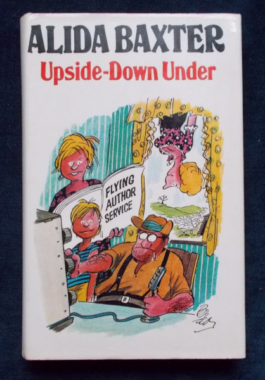
This English author set out to write a sort of a travel book. She couldn't stay home and write about other people's husbands, and everyone she knew was someone else's husband. Even her ex-husband was someone else's husband. So she made the journey to Australia - well out of range of extradition for libel! - and found out about Australians: Where one may and may not swear; what light relief at an opal mine actually was; how to be given a present in a ladies' lavatory in a ghost town; and what it was like to spend a morning with an exhibitionist. Veteran actor Leslie Thomas said: "She is one of the funniest ladies I know." Cover art and illustrations by Bill Tidy.
-
 Vivien Leigh won international acclaim at the age of twenty-six when she crossed the Atlantic and walked off with the coveted part of Scarlett O'Hara in Gone with the Wind under the noses of some of Hollywood's most famous stars. For this part alone she has earned a lasting place in film history. Loved by millions, Vivien had a illustrious stage and screen career that spanned thirty years. She triumphed in such diverse roles as Blanche Dubois in A Streetcar Named Desire and Cleopatra, playing opposite her husband Laurence Olivier. She was a complex and driven personality, a brilliant actress whose terrifying dips into manic depression were little understood by those around here. This is no 'Hollywood' filmography, but an intensely researched biography that includes Vivien Leigh's parents and a detailed history of her relationship with Leigh Holman. Of course, her love for Laurence Olivier and their twenty year marriage is covered, so much of it made difficult by recurring bouts of tuberculosis and manic depression. Vickers, drawing on many hours of conversation with her devoted friend, the actor John Merivale, explained how Vivien re-established her life after the divorce. Illustrated with black and white photographs.
Vivien Leigh won international acclaim at the age of twenty-six when she crossed the Atlantic and walked off with the coveted part of Scarlett O'Hara in Gone with the Wind under the noses of some of Hollywood's most famous stars. For this part alone she has earned a lasting place in film history. Loved by millions, Vivien had a illustrious stage and screen career that spanned thirty years. She triumphed in such diverse roles as Blanche Dubois in A Streetcar Named Desire and Cleopatra, playing opposite her husband Laurence Olivier. She was a complex and driven personality, a brilliant actress whose terrifying dips into manic depression were little understood by those around here. This is no 'Hollywood' filmography, but an intensely researched biography that includes Vivien Leigh's parents and a detailed history of her relationship with Leigh Holman. Of course, her love for Laurence Olivier and their twenty year marriage is covered, so much of it made difficult by recurring bouts of tuberculosis and manic depression. Vickers, drawing on many hours of conversation with her devoted friend, the actor John Merivale, explained how Vivien re-established her life after the divorce. Illustrated with black and white photographs. -
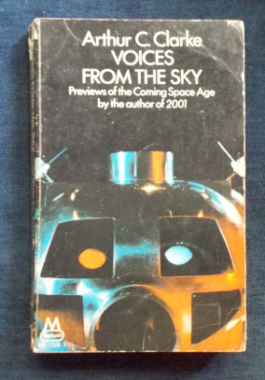 Previews of the coming space age...The universe is full of voices, calling from star to star in myriad tongues. One day we shall join that cosmic conversation, though it may be ages before we cross the mega-mega-miles sundering us from our equals, and our masters. This is Clarke's log of a voyage which has only just begun - Man's odyssey from Earth, his first home, among the planets, to the stars, and across the universe. There are also plenty of snippets of his life slipped into the essays.
Previews of the coming space age...The universe is full of voices, calling from star to star in myriad tongues. One day we shall join that cosmic conversation, though it may be ages before we cross the mega-mega-miles sundering us from our equals, and our masters. This is Clarke's log of a voyage which has only just begun - Man's odyssey from Earth, his first home, among the planets, to the stars, and across the universe. There are also plenty of snippets of his life slipped into the essays. -
 In 1932, starlet Carlotta Monti met Fields on a back lot at Paramount. For the next fourteen years, she was his mistress, sharing his bed, board and bar in a series of rented mansions. She witnessed his bickering with directors and studios, his exuberant pranks and verbal fireworks. She was there until the tragic end of his battle with alcohol. This insightful memoir is packed with bizarre anecdotes, exclusive reminiscences and often ribald glimpses into the private life of one of Hollywood's most outrageous personalities. Illustrated with black and white photgraphs.
In 1932, starlet Carlotta Monti met Fields on a back lot at Paramount. For the next fourteen years, she was his mistress, sharing his bed, board and bar in a series of rented mansions. She witnessed his bickering with directors and studios, his exuberant pranks and verbal fireworks. She was there until the tragic end of his battle with alcohol. This insightful memoir is packed with bizarre anecdotes, exclusive reminiscences and often ribald glimpses into the private life of one of Hollywood's most outrageous personalities. Illustrated with black and white photgraphs. -

Walter Matthau: Allan Hunter
$25.00Walter Matthau (1920 - 2000) was once described as 'about as likely a candidate for stardom as the neighbourhood delicatessen man' Walter Matthau worked long and hard to achieve public recognition. AT the age of 45 he found the perfect role in The Odd Couple and became the oldest overnight success in the business. He quickly established himself as a top box-office attraction, won an Oscar for the conniving shyster lawyer in The Fortune Cookie and continued to delight audiences with a string of movie hits: The Sunshine Boys, Kotch, Charley Varrick, The Front Page, The Bad News Bears, Pete 'n' Tillie and House Calls. Hunter chronicles Matthau's tough childhood in New York, his early jobs as boxing instructor, basketball coach and filing clerk; his lifelong (and expensive) addiction to gambling; his distinguished Air Force service record; the years as a villain in films like King Creole; his doctor's prediction on his heart: 'My Doctor gave me six months to live; when I couldn't pay the bill he gave me six months more'; the disastrous making of Hello, Dolly with Barbra Streisand and happier partnerships with Jack Lemmon, Neil Simon, George Burns and Glenda Jackson. -
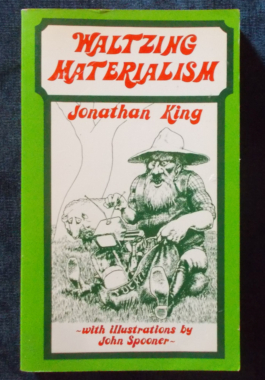 Published in 1978, this is the book that tells Australians who they really are via the controversial perception by the author of Australian apathy, greed and intolerance while scrambling for a fast buck and endless possessions - not to mention being lazy and overweight as well. And delusional. King - a descendant of Philip Gidley King, Governor of N.S.W. 1800 - 1806 - explodes the myths of the hard-working outback heroes to replace them with I'm all right Jack...I'm getting rich quick...I'm getting my share of...on the grounds that the spirit of materialism has waltzed through Australian history for too long. Illustrated by John Spooner.
Published in 1978, this is the book that tells Australians who they really are via the controversial perception by the author of Australian apathy, greed and intolerance while scrambling for a fast buck and endless possessions - not to mention being lazy and overweight as well. And delusional. King - a descendant of Philip Gidley King, Governor of N.S.W. 1800 - 1806 - explodes the myths of the hard-working outback heroes to replace them with I'm all right Jack...I'm getting rich quick...I'm getting my share of...on the grounds that the spirit of materialism has waltzed through Australian history for too long. Illustrated by John Spooner. -

Wandering Girl: Glenyse Ward
$10.00Here is a hidden story and its telling is long overdue. A young Aboriginal girl is released from the spartan strictness of mission upbringing and sent to work as a domestic servant on a property in the wealthy farming district. She is 16 and cut off from all help - a 24 hour captive of an aloof and puzzling family. Her initial reactions are hurt and astonishment but her resourcefulness grows with her experience of life. She's a survivor, despite petty tyranny and humiliating treatment, behaviour so callous it is hard to believe that this true account occurred only in the 1960s and not a hundred years ago. -
 A fascinating insight into the life and times of the men and women immortalised in the literature of King Arthur and the Round Table. The authors present a detailed picture of the culture, weapons and places associated with Britain's most famous king, ranging from the true sixth century origins to the romances and chronicles of the Middle Ages. Featuring original illustrations researched by the authors and painted by Richard Hook, new colour photographs of the most famous sites, and numerous black and white illustrations including archaeological reconstructions. Included is a rare list of the original names of the 250 of Arthur's warriors, an examination of the 12 great battles fought against the Saxon invaders in the sixth century, and descriptions of the legendary and sometimes magical weapons attributed to the Celtic king and his men. A special feature, unique to this reassessment of Arthurian history and legend, is the inclusion of six new stories by the authors. Through this feature, familiar Arthurian adventures are retold in their true sixth century cultural context. Cover art by Richard Hook.
A fascinating insight into the life and times of the men and women immortalised in the literature of King Arthur and the Round Table. The authors present a detailed picture of the culture, weapons and places associated with Britain's most famous king, ranging from the true sixth century origins to the romances and chronicles of the Middle Ages. Featuring original illustrations researched by the authors and painted by Richard Hook, new colour photographs of the most famous sites, and numerous black and white illustrations including archaeological reconstructions. Included is a rare list of the original names of the 250 of Arthur's warriors, an examination of the 12 great battles fought against the Saxon invaders in the sixth century, and descriptions of the legendary and sometimes magical weapons attributed to the Celtic king and his men. A special feature, unique to this reassessment of Arthurian history and legend, is the inclusion of six new stories by the authors. Through this feature, familiar Arthurian adventures are retold in their true sixth century cultural context. Cover art by Richard Hook. -
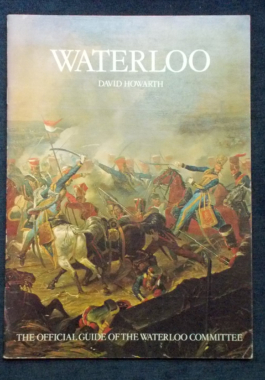 Believed to be the first guide to the battlefield written in English by an English writer, who is probably also the greatest living expert on Waterloo. There's descriptions of the battle location, weaponry and tactics that were all implement in a few hours on June 187, 1815. Illustrated.
Believed to be the first guide to the battlefield written in English by an English writer, who is probably also the greatest living expert on Waterloo. There's descriptions of the battle location, weaponry and tactics that were all implement in a few hours on June 187, 1815. Illustrated. -
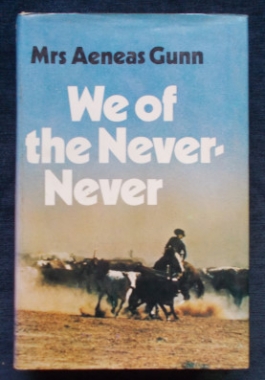
Mrs. Gunn's timeless classic was first published in 1908. Newly married, Jeannie Gunn accompanies her husband to 'The Elsey' the huge cattle station in the Northern Territory, several hundred miles from the nearest town. She is one of the very few white women n the area and at first her presence is resented by the stockmen until her warmth and spirit win their affection and respect. A rare chronicle of pioneer life in the outback, written with moving simplicity to convey the beauty and cruelty of the land, the isolation and loneliness, and the comradeship and kindness of the early settlers.
-
 Wages were cut by 20 per cent, but not the mortgage. The dole was a pittance. People lived in shanty towns and camped in empty buildings. They stood in queues, seemingly forever, despised by bureaucrats and slowly losing their self respect...And there were weevils in the flour. This book was five years in the making, taken from over 200 taped interviews - teachers and carpenters, soldier settlers, wharfies, Communist spokesmen, miners, swaggies, policemen and businessmen. There are interviews with those who were children at the time; housewives, husbands, single men and women. This is a grass roots study of a period of Australian history described by the people to whom it happened, who endured, suffered and made the best of it. But more than that, it is a study in human understanding - as we learn to live someone else's life: to beg for food, to walk miles to find walk, faint with hunger, to jump trains, make clothes out of flour bags, live for days on half a case of rotten pears, to make do...and still preserve our human dignity. The Sydney Morning Herald: 'The range of this book is immense...it should become a major work of reference in Australian social history.'
Wages were cut by 20 per cent, but not the mortgage. The dole was a pittance. People lived in shanty towns and camped in empty buildings. They stood in queues, seemingly forever, despised by bureaucrats and slowly losing their self respect...And there were weevils in the flour. This book was five years in the making, taken from over 200 taped interviews - teachers and carpenters, soldier settlers, wharfies, Communist spokesmen, miners, swaggies, policemen and businessmen. There are interviews with those who were children at the time; housewives, husbands, single men and women. This is a grass roots study of a period of Australian history described by the people to whom it happened, who endured, suffered and made the best of it. But more than that, it is a study in human understanding - as we learn to live someone else's life: to beg for food, to walk miles to find walk, faint with hunger, to jump trains, make clothes out of flour bags, live for days on half a case of rotten pears, to make do...and still preserve our human dignity. The Sydney Morning Herald: 'The range of this book is immense...it should become a major work of reference in Australian social history.' -
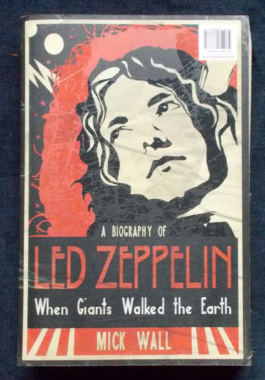
 A detailed history of the heavy metal greats, chronicled from their beginnings as The New Yardbirds, the changes wrought over the years and the influences of the blues music from the early 1900s as well as the fantasy images from Tolkien that made Led Zeppelin the most unique rock band in music history. Includes interviews with band members and the author, previously unseen photographs and a unique double image cover.
A detailed history of the heavy metal greats, chronicled from their beginnings as The New Yardbirds, the changes wrought over the years and the influences of the blues music from the early 1900s as well as the fantasy images from Tolkien that made Led Zeppelin the most unique rock band in music history. Includes interviews with band members and the author, previously unseen photographs and a unique double image cover. -
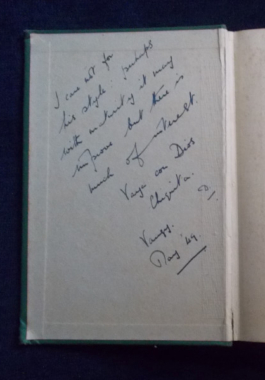
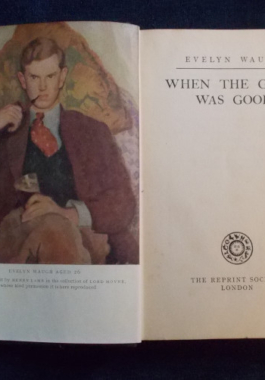 A travelogue of Waugh's travel adventures: a journey by sea throughout the eastern Mediterranean; a wry account of an impulsive visit to Abyssinia (now Ethiopia) to witness the coronation of Haile Selassie; travels in Aden and East Africa and the crossing of Belgian Congo; British Guiana (Guayana) and Brazil; and a return to Abyssinia as a war correspondent in response to the war with Mussolini's Italy. His misadventures as a correspondent also formed the basis for his comic 1938 satiric novel Scoop.
A travelogue of Waugh's travel adventures: a journey by sea throughout the eastern Mediterranean; a wry account of an impulsive visit to Abyssinia (now Ethiopia) to witness the coronation of Haile Selassie; travels in Aden and East Africa and the crossing of Belgian Congo; British Guiana (Guayana) and Brazil; and a return to Abyssinia as a war correspondent in response to the war with Mussolini's Italy. His misadventures as a correspondent also formed the basis for his comic 1938 satiric novel Scoop. -
 Hilarious. Incredible. Bizarre. Witty. Deliciously malicious! Where There's a Will is an absorbing collection of odd and curious wills from many countries and many times. Vindictive wills, revealing wills, wills written on nurses' petticoats, eggshells, tractor fenders and wills found in a bottle at sea included in the book reflect the full range of man's virtues and vices. The colorful individuals whose Last Will and Testament grace the pages of this book give more than their money away - they give themselves away. They use their wills to get back at obnoxious relatives, to maintain control beyond the grave, to reward, to punish, to defy those who say you can't take it with you. And to have the last word. Among the famous and the infamous whose wills are featured are: George Bernard Shaw, W.C. Fields, Patrick Henry, Janis Joplin, Napoleon, Jack Kelly, Howard Hughes, William Shakespeare, Ian Fleming, Billy Rose, Picasso, Marilyn Monroe, Aristotle Onassis. . . and many more.
Hilarious. Incredible. Bizarre. Witty. Deliciously malicious! Where There's a Will is an absorbing collection of odd and curious wills from many countries and many times. Vindictive wills, revealing wills, wills written on nurses' petticoats, eggshells, tractor fenders and wills found in a bottle at sea included in the book reflect the full range of man's virtues and vices. The colorful individuals whose Last Will and Testament grace the pages of this book give more than their money away - they give themselves away. They use their wills to get back at obnoxious relatives, to maintain control beyond the grave, to reward, to punish, to defy those who say you can't take it with you. And to have the last word. Among the famous and the infamous whose wills are featured are: George Bernard Shaw, W.C. Fields, Patrick Henry, Janis Joplin, Napoleon, Jack Kelly, Howard Hughes, William Shakespeare, Ian Fleming, Billy Rose, Picasso, Marilyn Monroe, Aristotle Onassis. . . and many more. -
 This collection of essays from the second Whitlam Conference of Labor Historians marks a further important stage in documenting the history of the Australian Labor Party. More than just a record for future generations, it is a handbook for the late 1980s and a guide for those charged with implementing Labor policies for the Australian Government. Topics covered: Aboriginal Land Rights; Education; Health; Reform of the Public Sector and Urban Policy. Contributors: Gough Whitlam; Bob Carr; Sol Encel; Graham Freudenberg; Marc Gumbert; Race Mathews; Tom Uren; Peter Wilenski and Deane Wells.
This collection of essays from the second Whitlam Conference of Labor Historians marks a further important stage in documenting the history of the Australian Labor Party. More than just a record for future generations, it is a handbook for the late 1980s and a guide for those charged with implementing Labor policies for the Australian Government. Topics covered: Aboriginal Land Rights; Education; Health; Reform of the Public Sector and Urban Policy. Contributors: Gough Whitlam; Bob Carr; Sol Encel; Graham Freudenberg; Marc Gumbert; Race Mathews; Tom Uren; Peter Wilenski and Deane Wells. -
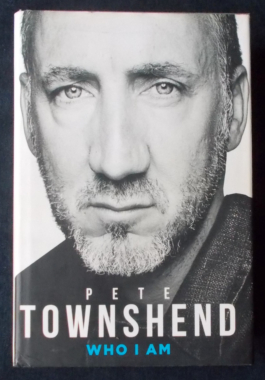
Who I Am: Pete Townshend
$15.00Songwriter, composer, lead guitarist and creative powerhouse behind The Who, Pete Townshend is a pre-eminent influence on rock. Spearheading Sixties rock smashing guitars and writing songs which challenged the function of popular music. Townsend created the power chord and broke the three-minute mould of the pop song in Tommy, Quadrophenia and later works. His intelligence, imagination and restless mind led him into uncharted waters; and he is still exploring and inspiring countless up and coming musicians. This is his own story; his difficult childhood and its repercussions later in life; and his quest to understand his own past while keeping faith with his audience. -
 Take a trip back to the days of real music, live music, satin flares, platform boots and - Slade, the most successful rock/glam band out of the U.K. . Noddy Holder, flamboyant lead singer - always recognisable in his cool hats - tells his fascinating story. Famous for rocking a generation with hits such as Mama Weer All Crazee Now, Cum On Feel The Noize, Far Far Away and of course Merry Christmas Everybody Slade challenged Gary Glitter, Elton John and The Sweet throughout the 1970s and into the 1980s for the biggest hits and the most glam outfits. Success in America in the 1980s brought them some of their biggest hits and touring with luminaries like Aerosmith, Santana and Sly and the Family Stone. Noddy eventually left Slade in 1990s to enter the world of TV and radio and in 1999, he was awarded an MBE in the Millennium Honours List. He tells it in a good-humoured, down-to-earth style. Features black and white photographs.
Take a trip back to the days of real music, live music, satin flares, platform boots and - Slade, the most successful rock/glam band out of the U.K. . Noddy Holder, flamboyant lead singer - always recognisable in his cool hats - tells his fascinating story. Famous for rocking a generation with hits such as Mama Weer All Crazee Now, Cum On Feel The Noize, Far Far Away and of course Merry Christmas Everybody Slade challenged Gary Glitter, Elton John and The Sweet throughout the 1970s and into the 1980s for the biggest hits and the most glam outfits. Success in America in the 1980s brought them some of their biggest hits and touring with luminaries like Aerosmith, Santana and Sly and the Family Stone. Noddy eventually left Slade in 1990s to enter the world of TV and radio and in 1999, he was awarded an MBE in the Millennium Honours List. He tells it in a good-humoured, down-to-earth style. Features black and white photographs. -

Whole Life: Morris Lurie
$10.00Morris Lurie, author, wrote more than twenty books including Flying Home, which was selected by the National Book Council as one of the ten best Australian books of the decade. His Twenty-Seventh Annual African Hippopotamus Race was voted by the schoolchildren of Victoria as their favourite story book by an Australian author. -
 Australia in the 1860s, the time of the roaming gangs of bushrangers, stealing gold and horses and seeking refuge among the country people who often protected the outlaws from the government troopers. Many bushrangers have been immortalised in song and legend: Donahoe, Frank the Darkie and Ben Hall, all of whom preferred to die with their boots on that to perish in irons. Here is the story of those adventurous years, when the Wild Colonial Boys baffled the law time and time again.
Australia in the 1860s, the time of the roaming gangs of bushrangers, stealing gold and horses and seeking refuge among the country people who often protected the outlaws from the government troopers. Many bushrangers have been immortalised in song and legend: Donahoe, Frank the Darkie and Ben Hall, all of whom preferred to die with their boots on that to perish in irons. Here is the story of those adventurous years, when the Wild Colonial Boys baffled the law time and time again. -

 The bushranging days of the nineteenth century are brought to life - the time when audacious gangs won notoriety by their crimes. This book vividly depicts the dark legacy of the convict system for both men and women, the stirring times of exploration and pioneering development, the hectic gold rushes and the riots they provoked - all the turmoil of life in a tough, rough, new country. Illustrated by Ralph Warner.
The bushranging days of the nineteenth century are brought to life - the time when audacious gangs won notoriety by their crimes. This book vividly depicts the dark legacy of the convict system for both men and women, the stirring times of exploration and pioneering development, the hectic gold rushes and the riots they provoked - all the turmoil of life in a tough, rough, new country. Illustrated by Ralph Warner. -

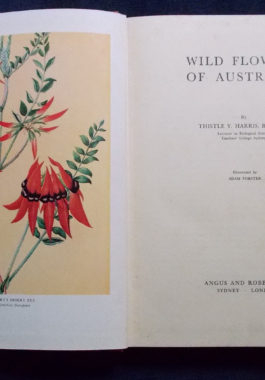 First published in 1938, this is a beautifully illustrated companion for field botanists interested in the diverse colours and growth of Australian native flowers and wild plants. Part I contains colour plates with a non-technical description of each plant for quick and easy reference; Part II contains more precise and technical descriptions with botanical keys. Illustrated by Adam Forster.
First published in 1938, this is a beautifully illustrated companion for field botanists interested in the diverse colours and growth of Australian native flowers and wild plants. Part I contains colour plates with a non-technical description of each plant for quick and easy reference; Part II contains more precise and technical descriptions with botanical keys. Illustrated by Adam Forster. -

 Keith Brockie spent many months travelling throughout Scotland in order to paint, sketch and draw the diverse native flora and fauna of the British Isles. The artwork is delicate, fresh and vital and accompanied by Brockie's notes and observations - a real treasure.
Keith Brockie spent many months travelling throughout Scotland in order to paint, sketch and draw the diverse native flora and fauna of the British Isles. The artwork is delicate, fresh and vital and accompanied by Brockie's notes and observations - a real treasure.


